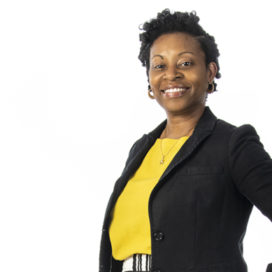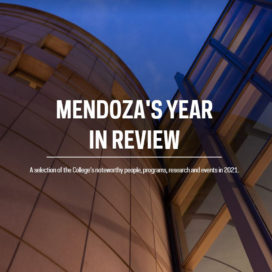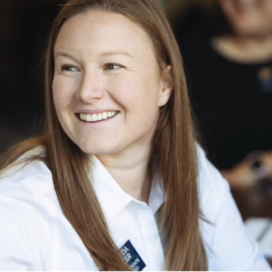Why Chase is opening branches, not closing them
Published: September 16, 2011 / Author: Ed Cohen

At a time when many banks, including the largest, Bank of America, are closing branches, JPMorgan Chase plans to build 300 new branches next year and probably 350 the year after that, the head of the company’s consumer banking division said today.
“The next-closest bank in [terms of] building branches will probably build 25 [next year],” said Ryan M. McInerney (’97), chief executive officer of Chase’s Consumer Bank.
Speaking to business students at his alma mater, the Mendoza College of Business at the University of Notre Dame, the former finance major said the new branches stem from Chase’s belief that it makes long-term economic sense to expand now, even as profits from consumer banking have shrunk.
McInerney spoke as part of the Mendoza College’s fall Boardroom Insights lecture series, which brings corporate leaders and senior executives to campus to discuss current business issues. He spoke Sept. 16, 2011.
In his present position, to which he was appointed about a year ago, McInerney oversees more than 76,000 employees at 5,396 branches serving about 20 million customers, he said. The unit generated about $5 billion last year, he said, but that was down about $1 billion from the year before.
He attributed the decline to what he termed “enormous changes” taking place in the consumer banking industry, including continuing low interest rates and government regulations that have reduced revenues from overdrafts and the interchange fees associated with debit-card charges.
McInerney said Chase, which has branches in most parts of the country, wants to build more so it can increase its physical presence in communities where its customers live. Those include the millions of people doing business with JPMorgan Chase’s other financial-services operations.
He said bank customers demand convenience. That’s why Chase has introduced innovations like smart-phone apps that make it possible to deposit a check by taking a picture of it, or to pay anyone for whom you have an email address. But customers also want face-to-face service, he said. About 80 percent of consumers have been in a bank branch in the past three months, he said.
McInerney also described his quest to improve customer service. The banks he oversees receive a total of about 40,000 complaints a month, he said.
“About six or seven months ago, I realized that we have to turn this around. So we got all our district managers together in a room and played over a loudspeaker for about an hour and a half nothing but complaints,” he said.
That experience yielded a greater understanding of customer frustrations and it led to a set of principles for customer care, he said. One of them is that no single employee is supposed to say no to a customer.
“I like to tell our people, if you find yourself in a situation where you’re having to say no to a client, go get somebody else. Go check [for other options]. One person can say yes, but it should take two people to say no to one of our customers,” he said.
McInerney said it costs “a couple million dollars” to build a new branch. In weighing potential new markets, the company looks at the community’s prospects not just for the next few years, but over the expected “30-, 40-, 50-year” lifespan of the facility,” he said.
Asked if he was concerned that competitor Bank of America is closing 10 percent of its branches while Chase is expanding, McInerney said, “Someone is right and someone is wrong.”
He added that Bank of America was closing branches only in markets, such as Los Angeles, where it had too many branches. Chase doesn’t have that saturation problem, he said. “We’re just starting from different positions.”
/news_and_events/news_articles/article/9986/why-chase-is-opening-branches-not-closing-them




